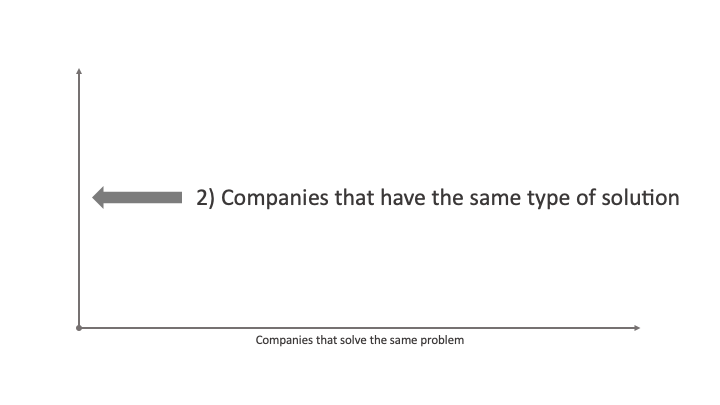Unmasking the Stealth Competitor in Your Industry
In the dynamic landscape of business, competition is a given. But are we always aware of where our competition might spring from? The typical viewpoint is to identify competitors within the same industry, offering similar solutions to the same problems. However, there’s a subtler and potentially more potent risk on the horizon: the “X for Y” competitive risk.
This type of competition can sneak up on you and your business, emerging from companies that are initially not direct competitors. They might be in a different industry, solving different problems, but utilizing similar technology or solutions. As these companies expand their offering or enter new markets, they become potential competitors, and that’s when “X for Y” competition arises.
Let’s break this down by considering two axes. One axis represents companies solving the same problem,

and the second axis denotes companies employing the same type of solution.

Imagine you’re running a property portal in the UK. Your direct competition would be other property portals like Rightmove, Zoopla, and On The Market. They are companies addressing the same problem in the same way, forming a two-sided online marketplace to help estate agents sell or rent properties.

But what about your indirect competition? These might be services like newspaper supplements or a concierge service. They address the same problem – helping estate agents sell or rent properties, but through a different solution. Here, they might opt for a non-digital or high-touch customer service approach.

Then there’s a different class of competition: budget competition. These could be services offering 3D photography or drone videos, which aim to improve property attractiveness. They tackle a different problem but compete for the same resources, thus adding to your competitive landscape.

Finally, we come to the core of the “X for Y” competitive risk – the potential competition. These are often marketplaces that extend to new markets. They start by addressing a different problem with the same solution – a two-sided online marketplace. As they expand, these companies could decide to move into your territory. Consider potential competitors like Amazon, Facebook, Airbnb, Etsy, Wayfair, or booking.com, each capable of disrupting your industry by solving a different problem in a similar way to yours.

Another real-world example of this is the competition between Uber and Lyft. Both companies started with the same problem – providing reliable transportation – and used similar solutions – a peer-to-peer ride-sharing app. But as they’ve grown and expanded, they’ve started to venture into different territories, like food delivery, thus potentially becoming a competitor for companies in a different industry.
So, to wrap up, the “X for Y” competitive risk is a subtle yet critical factor that businesses need to consider. It’s the unseen competitor, an X from a different industry, potentially becoming a Y in your industry. Today’s allies could be tomorrow’s competitors, so it’s crucial to be aware, adaptable, and always ready for the unexpected
